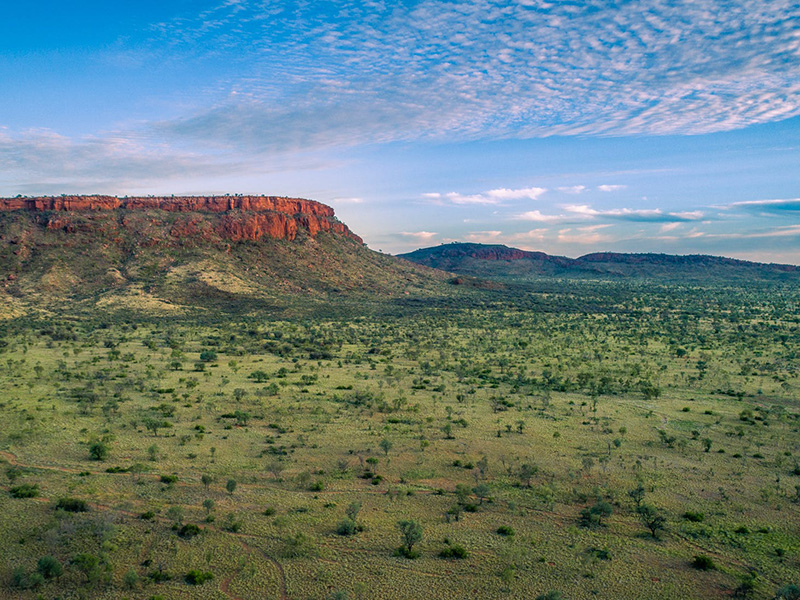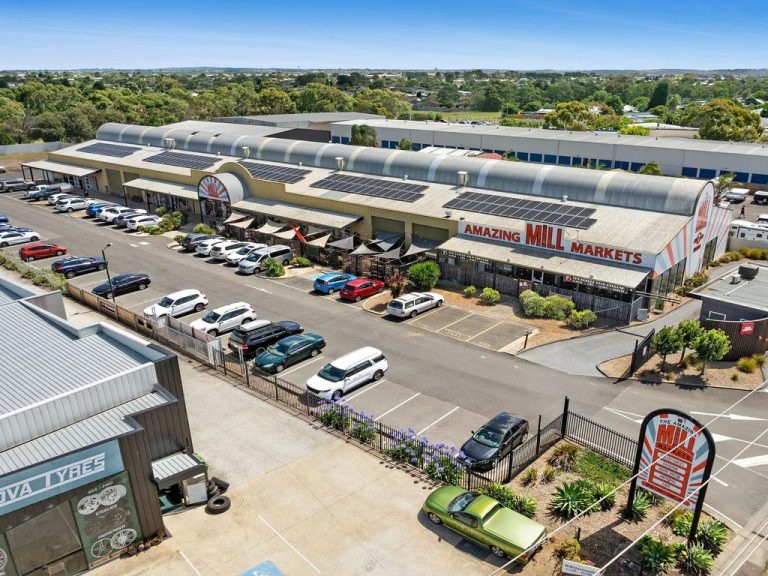‘Very buoyant times’ for cattle stations looking to sell or expand

Two seasons after the drought, farmers are seeing cash flowing back into their businesses, with the result an increase in demand for cattle properties and more of them on the market.
Mount Doreen is the latest to be listed via Colliers Agribusiness, with expressions of interest closing on 12 April. It’s one of the largest organic cattle stations in central Australia, comprising a total area of 733,700 hectares – around three times the size of the Australian Capital Territory.
The property is one of several large cattle farms to have hit the market this year.

A proven breeding property with irrigated farming in Central Australia, Neutral Junction has been in operation for more than 100 years. Picture: realestate.com.au/buy
Expressions of interest have recently closed on Neutral Junction, a breeding property on 460,000 hectares located south of Tennant Creek being sold via Nutrien Harcourts.
The Walhallow Aggregation, comprising the Walhallow and Cresswell Downs cattle stations in the northeast part of the Territory, spans 1,003,400 hectares and is being sold via Colliers Agribusiness with expressions of interest closing on 20 April.

The Walhallow Aggregation, made up of two cattle stations and spans over one million hectares, is also currently on the market. Picture: realestate.com.au/buy
Mount Doreen resides around 380km northwest of Alice Springs in the vast Tanami Desert. It’s a breathtaking property of mostly open country interspersed with spectacular ranges that provide water run-off for creek systems and water points.
When it was established in 1932 by drovers William and Doreen Braitling the land was, in farming terms, considered inhospitable and it wasn’t thought suitable for a large cattle station.
But the Braitlings made a success of the station and it remained in the family, with William and Doreen’s grandson Matthew Braitling now looking to retire.
Director of agribusiness transactions Jesse Manuel said it’s a special property.
“Its sheer expanse and breathtaking landscapes really must be seen to be appreciated. And from a commercial perspective, the property is capable of running very large numbers of cattle.”
The property can sustainably carry 22,000 to 23,000 head of cattle long term. Average rainfall is 350mm to 380mm per year, with CBRE estimating rainfall reliability in that part of the Territory at 39%.

With beef prices high and interests rates low, agents say now is a good time to sell a cattle station. Picture: realestate.com.au/buy
Mount Doreen’s infrastructure comprises a renovated homestead, formed roadways, airstrip, 16 equipped bores and yards, and a suite of plant and equipment.
Great time to sell up
David Goodfellow, managing director of CBRE Agribusiness, said that two years on from the drought, livestock breeders have had a chance to restock their cattle, generate cash flow and grow. And this will translate into property expansion and sales as owners decide to reinvest or cash in.
“The returns and possibilities in the cattle industry have taken a big lift. What we’ll see is increasing demand for cattle properties, particularly over the next two years,” he said.
“We’ll see those families who are not committed to staying in agriculture for another generation taking advantage of these very buoyant times. And we’ll see other families who are wanting to set up their business to be more profitable for another generation take advantage of low interest rates and good commodity price forecasts to expand.”
Mr Manuel agrees it’s the ideal time to sell a cattle station thanks to “high beef prices, low interest rates and the lack of other really good long-term investment opportunities of scale.”
Demand from institutional investors – but not all
Mr Manuel said he’s been “inundated with enquiry from beef industry participants from all over the country, a few institutions and private equity players, as well as a handful of high net worth individuals from overseas”.
Mr Goodfellow expects the most likely buyer to be a local or foreign institutional investor that has a portfolio of similar properties.
“I would expect that the strongest competition for a property like this comes from a corporation that already has other cattle stations in Australia, looking at this one to diversify a little bit,” he said.
“Or it might be someone who is just starting out who’s committed to putting other properties into a portfolio to support Mount Doreen.”

As Australian breeders continue to restock their cattle herds after the drought, prices are expected to remain high. Picture: realestate.com.au/buy
But a cattle station won’t appeal to all institutional investors, he said.
Many are focusing more strongly on cropping and horticultural opportunities in response to trends towards vegetarianism and concerns around animal welfare.
“Some [very few] superannuation funds won’t invest in the livestock sector. It’s not their money so they have to be very responsive to the sentiments of their constituents,” he said.
Meat and live cattle markets remain strong
Livestock remains Australia’s largest agricultural sector, accounting for 47% of total production, according to the Department of Agriculture, Water and the Environment.
And global demand for beef is growing, Mr Goodfellow said, particularly in Asia, though exports to China have been decreasing of late.
At home, the live cattle market is also booming as farmers look to rebuild the national herd to pre-drought levels of 29 million – it is currently sitting at around 26 million.

Mount Doreen occupies a significant stretch of the Tanami Road, which links central Australia with the Kimberley. Picture: realestate.com.au/buy
A February Rural Bank report estimates the demand for more stock and a favourable weather outlook will continue to support cattle prices at very high levels.
All this is good news for stations looking to sell.
“Having some optimism around the outlook for cattle prices is giving people a lot of confidence right now,” Mr Goodfellow said.
“The forecast is quite buoyant for at least the next three years.”







